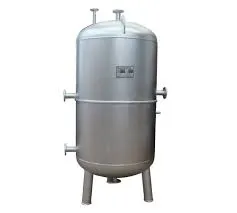High-Efficiency Oil Steam Boilers for Optimal Performance
Understanding Oil Steam Boilers A Comprehensive Overview
Oil steam boilers are essential components in various industries, providing efficient heat and steam for a wide range of applications. These boilers utilize oil as a fuel source, converting it into steam through a combustion process that generates heat. This article explores the operation, benefits, applications, and considerations surrounding oil steam boilers.
Operation of Oil Steam Boilers
The primary function of an oil steam boiler is to convert liquid fuel oil into steam. The process begins with the combustion of oil in a furnace, where it is mixed with air to create a high-temperature flame. This heat is transferred to water within the boiler, causing it to turn into steam. The steam is then collected and can be used for various applications, such as heating, powering turbines, or driving machinery.
Oil steam boilers can be classified into two main types fire-tube and water-tube boilers. In fire-tube boilers, hot gases pass through tubes submerged in water, transferring heat to the water and producing steam. Conversely, water-tube boilers circulate water through tubes that are heated by external flames, allowing for higher pressure and temperature steam production, making them suitable for more demanding applications.
Benefits of Oil Steam Boilers
One of the key advantages of oil steam boilers is their efficiency. Modern oil boilers are designed to maximize fuel combustion, resulting in less wasted energy and lower operational costs. Additionally, oil has a higher energy density compared to other fuels, meaning that oil steam boilers can produce more steam with less fuel.
Another significant benefit is their versatility. Oil steam boilers can be used in various industries, including manufacturing, food processing, and pharmaceuticals, where steam is a critical element in production processes. They are also capable of operating in remote locations where natural gas supply might not be feasible.
oil steam boiler

Moreover, oil steam boilers can be equipped with advanced control systems that monitor and manage the combustion process, leading to more consistent steam quality and pressure, essential for many industrial applications
.Applications
The applications of oil steam boilers are vast and varied. In the manufacturing sector, steam is used for heating, sterilization, and product processing. For instance, in the textile industry, steam is crucial for dyeing fabrics and ensuring proper treatment. Similarly, in the food industry, oil steam boilers are employed for cooking, pasteurization, and maintaining hygiene standards by sterilizing equipment.
Additionally, oil steam boilers play a significant role in power generation, particularly in facilities that rely on steam turbines. The high-pressure steam produced can drive turbines that generate electricity, making them an integral part of energy production systems.
Considerations
While oil steam boilers offer numerous benefits, certain considerations must be addressed. Fuel availability is a crucial factor; fluctuations in oil prices can affect operational costs. Furthermore, the environmental impact of fossil fuels is a growing concern, prompting many industries to explore alternative energy sources, such as biomass or natural gas.
Maintenance is also vital to ensure efficient operation. Regular inspections and servicing are necessary to prevent breakdowns and prolong the boiler's lifespan. Compliance with safety regulations and standards is essential to mitigate risks such as leaks or explosions.
In conclusion, oil steam boilers are a fundamental technology in many industrial processes, providing reliable and efficient steam for various applications. Understanding their operation, benefits, and challenges helps industries make informed decisions about their heating solutions, ensuring both productivity and sustainability.
-
Industrial Electric Steam Boiler Manufacturers | Efficient SolutionsNewsAug.08,2025
-
Industrial Electric Steam Boilers | Top Manufacturers & SuppliersNewsAug.07,2025
-
Leading Electric Steam Boiler Manufacturers for IndustryNewsAug.06,2025
-
Top Electric Steam Boiler Manufacturers | AI EfficiencyNewsAug.04,2025
-
Efficient Thermal Oil Boilers with AI Optimization | Superior PerformanceNewsAug.03,2025
-
Custom Steam Boilers Manufacturer | AI-Enhanced EfficiencyNewsJul.31,2025

